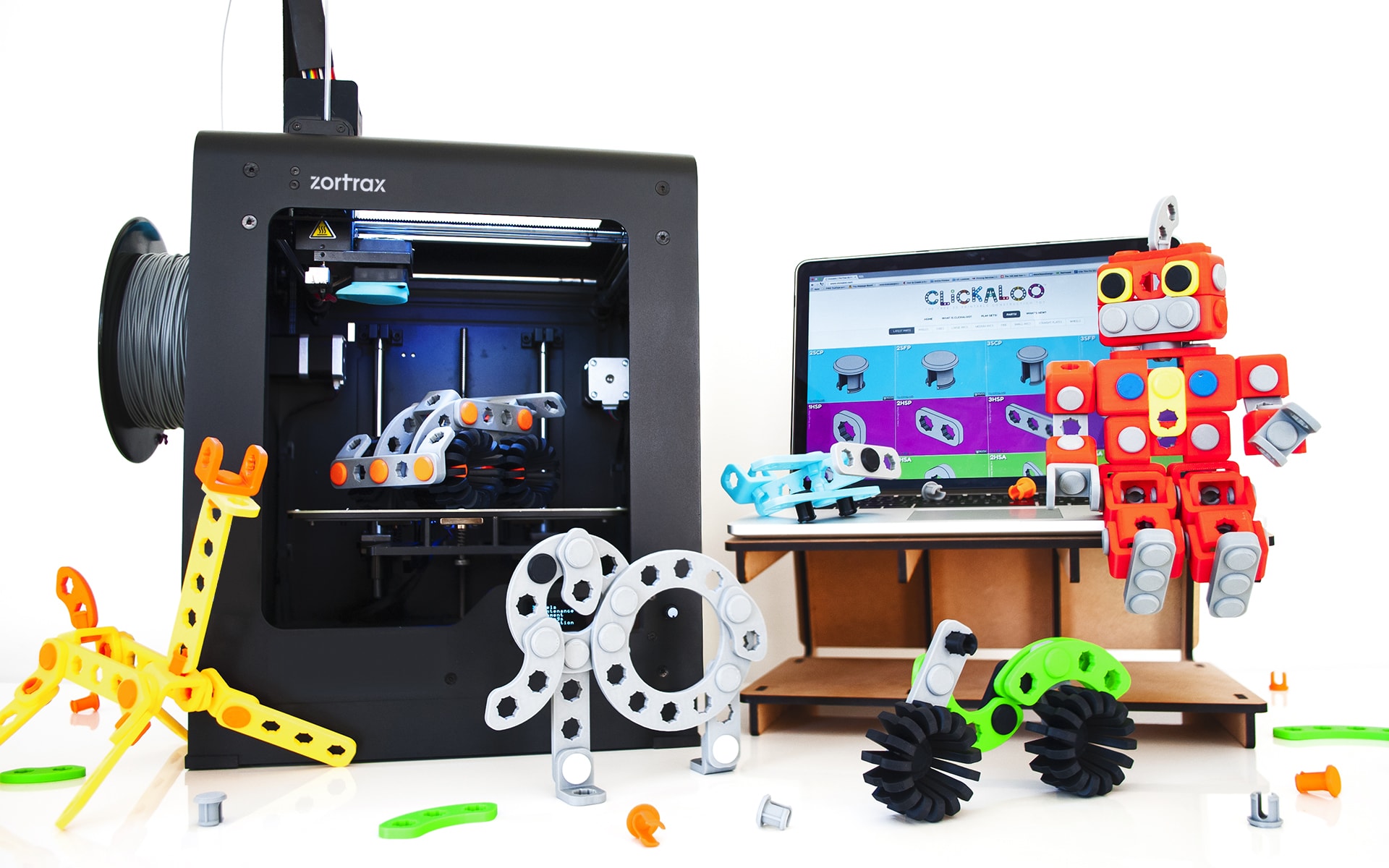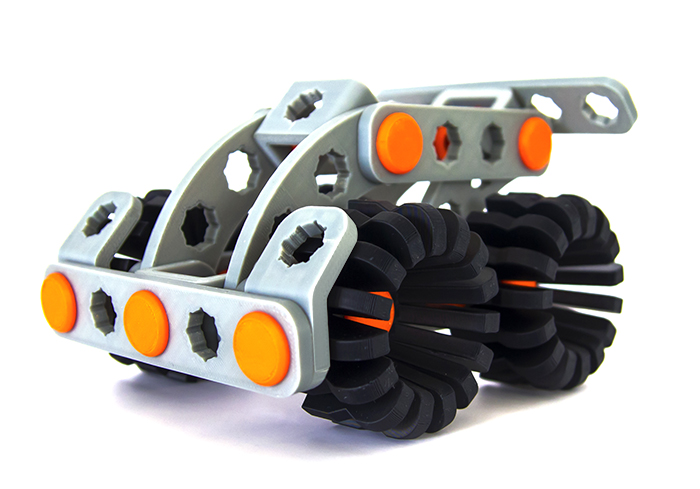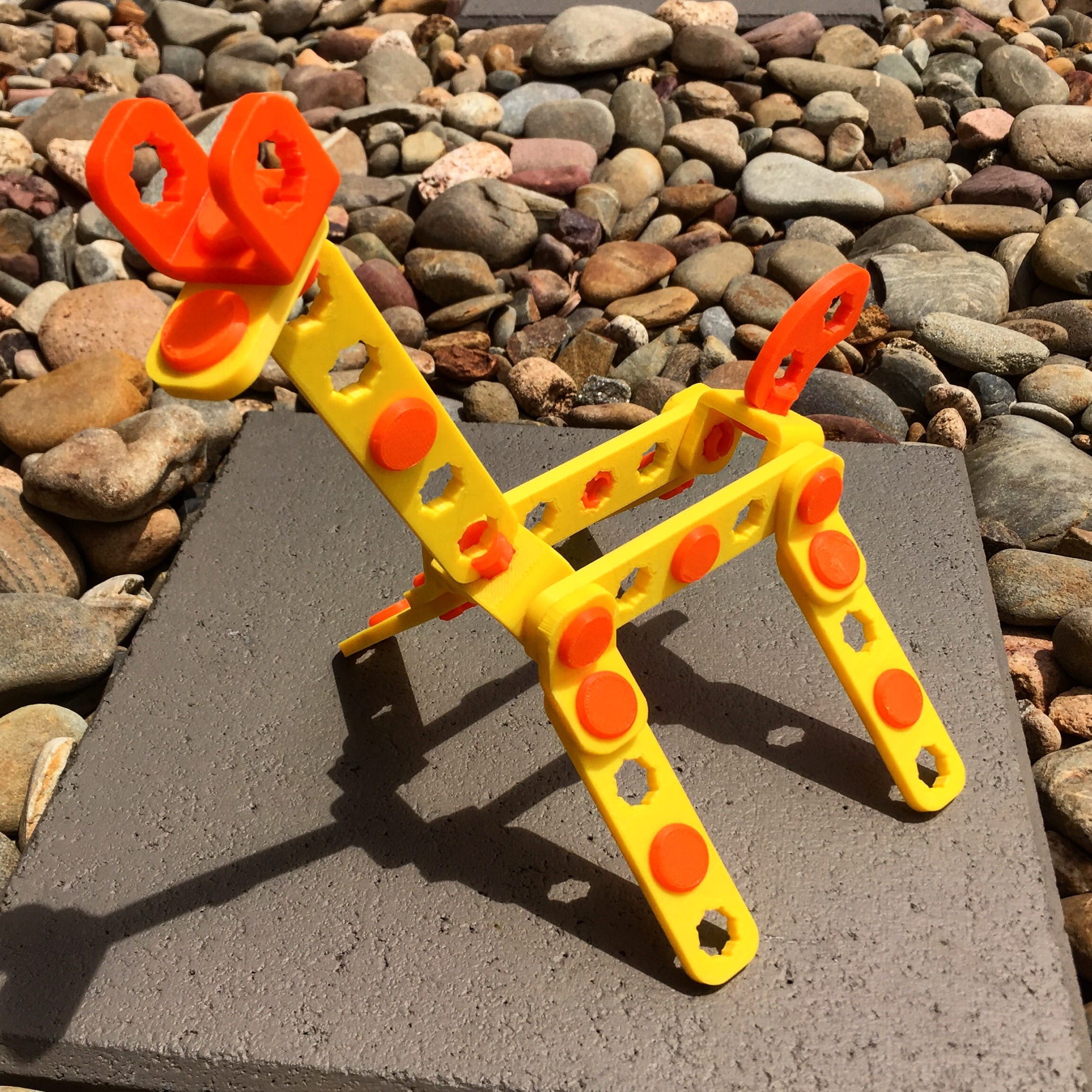Plug, Play & Learn – the New Approach Towards 3D Printing in Education
 Toys and educational aides 3D printed with Zortrax M200
Toys and educational aides 3D printed with Zortrax M200
We believe that 3D printing, which among many other things, gives the possibility to create construction toys, especially such amazing ones, goes beyond the limit of age. We‘ve got strong evidence to prove it thanks to the Australian-based designer Adrian Spagnuolo who introduced us to the world of 3D printed toys.
Toys’ Coming of Age
Let’s stop for a while and cast our minds back to the times of our childhood. That’s what did one of Zortrax M200 users to come up with such creative ideas that reflected his early love for construction toys and the palette of possibilities they give to a young mind. The designer’s conception was to create toys that not only give children lots of joy, but also help to improve their level of creativity by giving them unlimited possibilities to construct cars, animals, robots and whatever they can imagine. The whole idea is called Clickaloo as you can get your own models just by a few clicks, simply by matching some of the module elements with special pins. Of course detaching elements is also this simple, so in case you got bored with a particular model, you can easily transform it to something else. If you are wondering where you can get these toys the answer is everywhere. The only condition is having a Zortrax 3D printer and the access to the Internet where you can download the free files of Clickaloo and 3D print them.
3D Print Comes into Play
When it comes to the details of the 3D printing the elements, it is a really trouble-free process. All the parts are available on the Clickaloo website in a form of .stl files that just need to be copied to Z-SUITE slicing software and then saved to SD card and inserted to the 3D printer. As it is visible in the pictures, the shapes of blocks are pretty simple and thin, so printing them doesn’t take much time and is a rather hands-free activity. The time is saved also due to the size of the build plate which allows to print many elements simultaneously. What is more, because of their shape, the support is not necessary for most of the parts, so the overall 3D printing cost is low. All these aspects were taken into consideration by the Clickaloo designer, as he admits that: “it’s a great printer that is consistent with every print – making it great for an iterative design process when you need to print similar versions of the same part over and over again to test things.” The main thing stressed by Spagnuolo is the reliability of the Zortrax 3D printer, which allows fast prototyping and iterative testing, which gives the opportunity to try out all the models and check if any remarks are necessary. The designer also adds that he haven’t used any post-processing techniques to enhance the looks of the models, the only thing he did was using the heat gun to get rid of minor scratches.
 Buggy constructed with 3D printed modules
Buggy constructed with 3D printed modules
Color Me Amazing
The material used for creating Clickaloo blocks is Z-ABS. Apart from the fact that this is the most basic and economic material from our range, it also the one that has wide application in toy industry. This is basically thanks to its resistance and durability as the toys need to be solid and safe, not to make the children destroy them and hurt with or swallow the small parts. However, yet another great choice for printing these blocks is Z-ULTRAT, the toughest and the most resistant material from Zortrax offer. The elements made from Z-ULTRAT, apart from better physical properties, will have more shiny surface than Z-ABS. That could be a minor thing, but in case of 3D printing toys the real advantage of this material will be that it is available in 22 colors from 4 different palettes. That simply means that now, you can 3D print toys better adjusted to the kids individual preferences and enjoy models in the shades of Pastels, Neons, Neutrals or Basics.
The Best Toys for Future Engineers
Having the proper equipment to create quality end-use parts is vital, but there are more advantages of incorporating a 3D printer for producing the models dedicated to the youngest receivers. First of all, the main point to focus on is the process itself. As the creator of Clickaloo states: “… I really want to get kids involved in 3D printing as I don’t think there is enough out there for kids.” Spagnuolo stresses the great educational value that the 3D printer gives to kids, as it can arise their interest in designing and the latest technologies like additive manufacturing. The young age, that can be perceived by many as the factor that excludes the children from grasping the technological nuances, is in fact their strongest point. That’s because the level of creativity and the learning potential is the highest in the children of school age. They grasp the new knowledge and skills quickly and they came up with many ideas for designs, so why do not allow them to and support their skills? Drawing the children’s attention into 3D printing technology and having them involved in the process may result in future improvements.
 The only limit is your imagination
The only limit is your imagination
Toy with your Ideas
Yet, there are some other areas where 3D printing and education interfere. The device can be a useful tool for university students, school kids and anyone who needs props to help obtain better acquisition. In fact the number of fields where 3D printing can be utilized is open-ended – math diagrams, anatomical models or mockups of historical buildings– almost everything that may visualize the contents of subjects and thus enhance children’s understanding is worth 3D printing. What is more, the students benefit from the fact that they are offered a first-hand experience of creating the object and understand its mechanics as they can see the way from the concept to a ready model.
A Joyful Insight
All in all, the presented aspects of 3D printing in education are aimed to show that a 3D printer is in fact a multitask tool which finds its use in various fields. It can be used for “serious” designs as well as the medium to express creativity of the youngsters. Additive manufacturing can be in fact the area in which adults can cooperate with the youngest users for achieving mutual benefits. It also shows that additive technology serves as the source of a great help to improve the level and quality of education, make it more technology-driven and up-to-date.